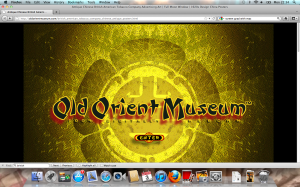Posted: October 11th, 2011 | No Comments »
While I’m plugging interesting bits that are found on my Midnight in Peking website I should note that Michael Aldrich, the great historian of Peking and author of the essential book The Search for a Vanishing Beijing, was kind enough to write a short history of the Fox Tower (now the Dongbienmen Tower), the superstitions surrounding fox spirits in Peking and around the Tower and the area around that corner of the old tartar wall. Michael knows more than just about anybody about this stuff and actually this information on the Fox Tower was originally meant for his The Search for a Vanishing Beijing book but got cut due to size limitations. When I first started researching Pamela Werner’s murder and wanted to know more about the Fox Tower, fox spirits and that part of Beijing, Michael was the only person who immediately knew what I was talking about!
The Search for a Vanishing Beijing by the way is now available in both paperback and (a very reasonably priced) Kindle edition
To see images of the Fox Tower and read Michael’s essay on the area click here

Posted: October 10th, 2011 | No Comments »
So we arrive at the centenary of Xinhai – the Double 10. You can read all the coverage on the internet though the actual history of the event, seems to me, to have been largely forgotten. Rather the centenary is being used by the relevant parties to reinforce their usual agendas – Hu Jintao attacks any notion of Taiwanese independence and calls for a return of Taiwan to the Motherland (something it never belonged to before!!). A public holiday in Taiwan of course though sadly most western cities it seems invited representatives from the PRC rather than the ROC to events!! Such is the kowtowing these days!!
On the mainland the centenary has been downplayed largely except where the narrative can be strictly controlled (i.e. the silly Jackie Chan film) and fitted to the Great Myth of life since 1949. Mostly it seems there has been some internal remembrance of Xinhai but the public has largely been left out of the process and given the glorious 90th anniversary of the Communist Party to celebrate (which, as far as I can work out, has left the public somnambulent this year).
All in all nothing of much interest written on this subject (though if you saw anything interesting do let me know) except perhaps this piece I saw in the Online Citizen (a non-official Singaporean media outlet) that raises the idea of the Sun Yat Sen Memoiral Hall in Singapore as either a travesty or an inspiration – seems to me this article reflects a lot of the confusion around Dr Sun, the KMT, modern Taiwan and today’s PRC and the world (particularly the wider Chinese world) response to it all.
 Hu Addresses the comrades with Dr Sun in the background – that whooshing noise if the great man spinning in his grave furiously
Hu Addresses the comrades with Dr Sun in the background – that whooshing noise if the great man spinning in his grave furiously
Posted: October 10th, 2011 | No Comments »
There’s so much stuff on my Midnight in Peking website that I felt it might be useful to point people in the direction of a couple of interesting things on the site. There are a lot of old photographs and images of the former Legation Quarter on the site and to accompany these I’ve written a short history and description of the Legation Quarter from its inception in 1861 through the destruction of the old Quarter during the Boxer Rebellion and the second incarnation of the area – what would have been Pamela’s Legation Quarter and where much of the action of Midnight in Peking occurs. I’ve also included a then/now road names index.
Both the images and the accompanying document can be found here
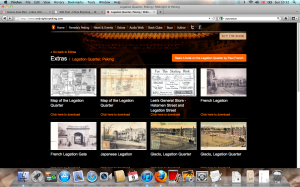
Posted: October 9th, 2011 | No Comments »
I note Earnshaw Books has published Jonathan Campbell’s Red Rock: The Long Strange March of Chinese Rock & Roll. I am woefully ignorant about the history rock & roll in China (or anywhere else for that matter) but recognise that it is an important subject. This book follows on from the recent and excellent collection of photographs of Chinese rock & rollers by Matthew Niederhauser (Sound Kapital). Blurb and jacket as below – I also need a lot more convincing about the imminent success of Chinese guitar bands on the world stage!
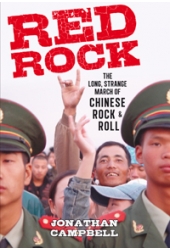
Rock and roll – rebellious, individualistic, explosive –seems incongruent with modern Chinese society. But as the music has evolved from a Western import into something uniquely Chinese, it has shaped and been shaped by China’s unique system and its relationship with the outside world. Red Rock looks at the people and events that have created Chinese rock’s unique identity, and tracks the music’s long journey from the Mao years to present. After boiling below the surface for over twenty years and now emerging from a thriving underground scene, Chinese rock may be ready to smash its guitars on the global stage.
Posted: October 9th, 2011 | No Comments »
If you don’t live in the UK then you’ve probably never heard of the force of nature that is Gok Wan. He’s everywhere on TV advising “ordinary” women around the country what to wear and how generally to feel better about themselves with his show How to Look Good Naked, Get The Look For Less! and others. He’s very camp and a mixed race lad from some provincial town somewhere. Apparently he used to be fat and have the usual range of “issues” but now he’s not fat. His TV shows are top rated and his autobiography Through Thick and Thin (geddit?) was a bestseller. So Gok Wan should be massively annoying, a sort of gay Clarkson. Yet strangely I don’t find him so and actually rather enjoy his positive messages and ability to make people look great in High Street fashions without resorting to extortionate designer labels they could never afford in real life. He is pretty funny in a British way and partly stands in the great tradition of camp TV hosts of whom there have been too many to name in the UK down the decades. But why does he appear on China Rhyming you may well ask?

Good question. But as regular readers will know we’ve commented on all manner of things Chinois and particularly the fascination displayed by book publishers with sticking cheongsam clad women on the covers of any book remotely Asia themed (and invariably without their faces showing for some reason – just look at everything from the rash of geisha novels to anything Chinese themed and slightly in the past). This reached a ridiculous height with the cover for Janice YK Lee’s The Piano Teacher which featured a cheongsam clad, parasol twirling woman with, obviously, her back to us – the book was not even about a Chinese woman but rather British ex-pats in post-war Hong Kong and nobody wears a cheongsam in the book at all!!

Yet the cheongsam is, of course, an iconic item of clothing design, wonderfully tailored to the archetypal Asian female body form and when worn at its best (think Maggie Cheung in In The Mood for Love etc) sensational. I’ve had cause to write about cheongsams a few times – from Carl Crow’s use of them in inter-war advertising in China to (in some current writing) using them to show women as sexy in a 1930s Shanghai way. The cheongsam works – yet perhaps not for the curvier woman. This issue of curves and cheongsams is germane given that many western women have curves while more and more Chinese girls (see my book, with Matthew Crabbe, Fat China) have or are going to have pretty soon curves.
And so back to Gok Wan, who has designed a range of affordable clothes for the TU brand at Sainsburys. It’s an interesting collection and looks great (at least on this model!) and within it is a cheongsam dress for a rather reasonable GBP45. Little black dresses are of course massively popular and enduring fashion staples and with Christmas coming and all those office parties should fly of the shelves. This cheongsam certainly has a classic look but is designed to accommodate a few extra curves. Certainly works on this model anyway – expect to see a lot of TU cheongsams at a Christmas party near you (if you live in the UK) this coming festive season.

Posted: October 8th, 2011 | No Comments »
Shanghailander and rugger-bugger Simon Drakeford is working on a history of the Shanghai Rugby Club from the early days of the International Settlement through to 1949 – am ambitious project indeed. I believe he’s working it up into a full length book but there’s a fairly long and interesting article here in That’s Shanghai. Simon seems to have omitted the chapter on how since time immemorial rugger buggers have insisted on being obnoxious, drinking too much, showing off their misogyny shamelessly while being a bit too tactile with each other for most ordinary blokes liking and generally being twats who seem to have no idea how much they annoy everyone else who has no interest in a silly shaped ball – I have high hopes of that chapter!
Looking forward to the full book at some point.
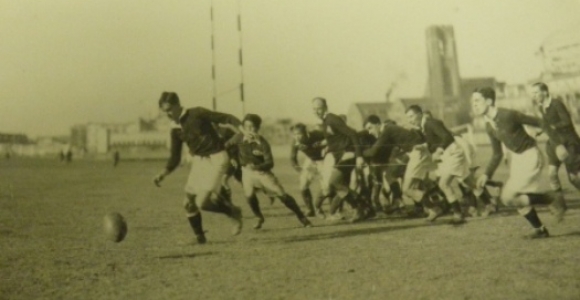
Posted: October 7th, 2011 | No Comments »
Been hearing good things about Gail Hershatter’s new book The Gender of Memory: Rural Women and China’s Collective Past. I don’t review on this site but there’s a good piece on the book on The China Beat web site here. And so, as usual, below the cover and the publishers blurb.
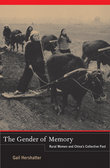
What can we learn about the Chinese revolution by placing a doubly marginalized group—rural women—at the center of the inquiry? In this book, Gail Hershatter explores changes in the lives of seventy-two elderly women in rural Shaanxi province during the revolutionary decades of the 1950s and 1960s. Interweaving these women’s life histories with insightful analysis, Hershatter shows how Party-state policy became local and personal, and how it affected women’s agricultural work, domestic routines, activism, marriage, childbirth, and parenting—even their notions of virtue and respectability. The women narrate their pasts from the vantage point of the present and highlight their enduring virtues, important achievements, and most deeply harbored grievances. In showing what memories can tell us about gender as an axis of power, difference, and collectivity in 1950s rural China and the present, Hershatter powerfully examines the nature of socialism and how gender figured in its creation.
Posted: October 6th, 2011 | 1 Comment »
Came across this site while browsing around the interweb the other day…The Old Orient Museum – with a lot of great old China advertising posters reproduced and with details in many cases. Rather absorbing.
